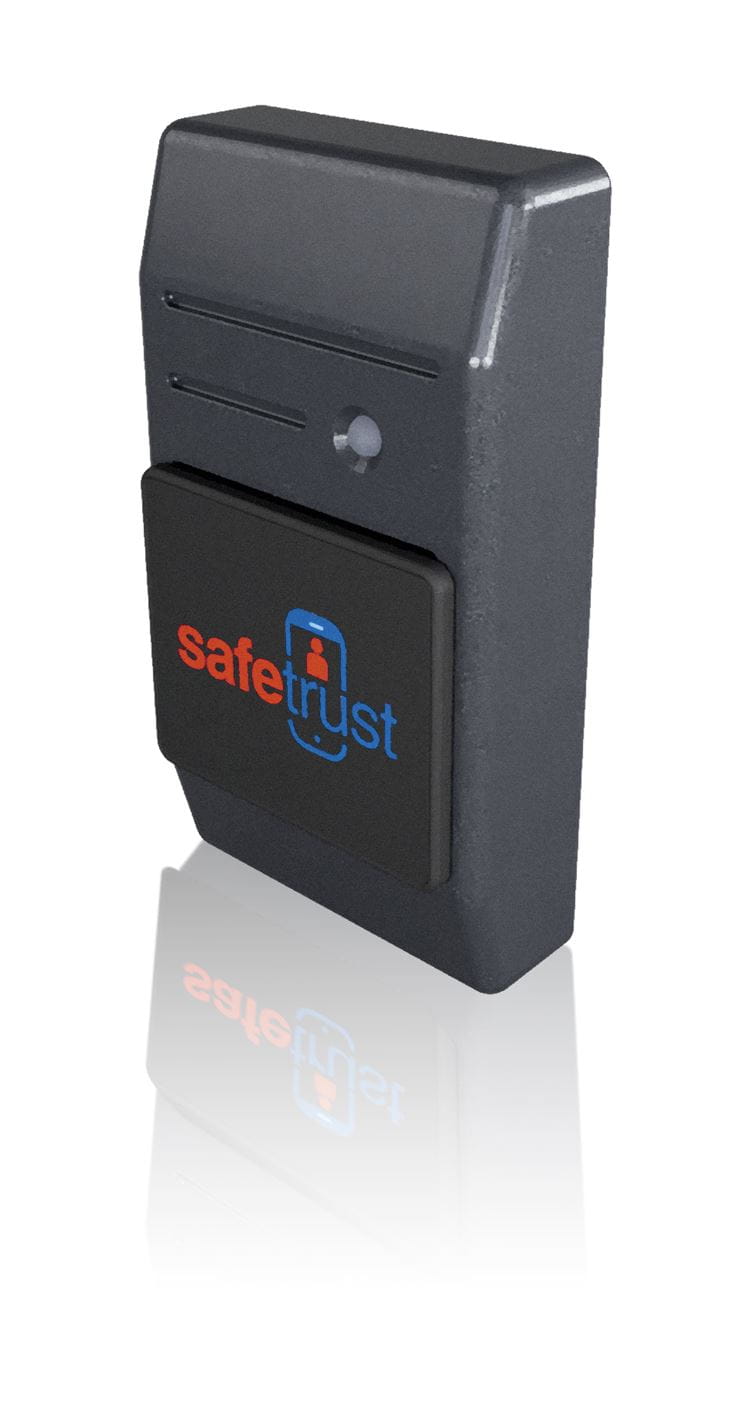HID
Let Nordic help you build the very best wireless mouse, keyboard, or USB dongle

Nordic Semiconductor today announces that Fremont, CA-based identity solutions company, Safetrust, has selected Nordic’s nRF52832 Bluetooth® Low Energy (Bluetooth LE) System-on-Chip (SoC) to provide the wireless connectivity for its ‘SABRE DECAL’ Bluetooth LE to RFID ‘gateway module’.
The SABRE DECAL attaches to conventional RFID building access readers allowing organizations and building management to replace or supplement existing building access RFID cards with a user’s iOS or Android Bluetooth 4.0 (and later) smartphone. In operation, the compact 33 by 39 by 3mm device is mounted with a ‘peel-and-stick’ adhesive backing to an existing host reader, enabling authorized personnel to gain access to the building using digital credentials stored within the ‘Safetrust Wallet’ app on their smartphone.
Encrypted building access credentials are sent from the mobile device to the SABRE DECAL using Bluetooth LE wireless connectivity provided by the Nordic SoC. The SABRE DECAL then translates the data into a supported RFID format enabling access to authorized users. The device does not prevent existing physical access cards from communicating with the reader, allowing migration to mobile credentials to be gradual or staged.
Thanks in part to the ultra low power characteristics of the nRF52832 SoC, the device requires no external battery, and instead draws power from the electromagnetic field the host reader normally emits to activate passive RFID cards. The nRF52832 SoC has been engineered to minimize power consumption with features such as the 2.4GHz radio’s 5.5mA peak RX/TX currents and a fully-automatic power management system that reduces power consumption by up to 80 percent compared with Nordic’s nRF51 Series SoCs.

Safetrust’s ‘Credential Manager’ administrator portal allows management to activate SABRE DECAL devices, manage and register users, as well as issue or revoke virtual credentials over-the-air to the Safetrust Wallet app on the user’s smartphone. The administrator can also activate controls around the use of those credentials, for example controlling the hours in which access is permitted. The Credential Manager can also be used to monitor user access, and where required can be configured to send event-based information to supported third-party analytics engines.
Nordic’s nRF52832 SoC is a powerful multiprotocol SoC ideally suited for Bluetooth LE and 2.4GHz ultra low-power wireless applications. The nRF52832 combines an 64MHz, 32-bit Arm® Cortex™ M4F processor with a 2.4GHz multiprotocol radio (supporting Bluetooth 5, ANT™, and proprietary 2.4GHz RF software) featuring -96dB RX sensitivity, with 512kB Flash memory and 64kB RAM.
The SoC is supplied with Nordic’s S132 SoftDevice, a Bluetooth 5-certifed RF software protocol stack for building advanced Bluetooth LE applications. The S132 SoftDevice features Central, Peripheral, Broadcaster, and Observer Bluetooth LE roles, supports up to twenty connections, and enables concurrent role operation. Nordic's unique software architecture provides clear separation between the RF protocol software and the developer's application code, easing product development.
“We selected Nordic’s nRF52832 SoC based on a number of factors; the compact package, the low power consumption, the Arm processor, and the simplicity of the design,” says Jason Hart, Safetrust CEO and Co-Founder.
“Also, our application relies on the complex timing of events in supporting simultaneous RFID and Bluetooth Low Energy transactions, and the Nordic SDK [Software Development Kit] enabled complex multi-threaded processes but also accelerated development time.”
Let Nordic help you build the very best wireless mouse, keyboard, or USB dongle